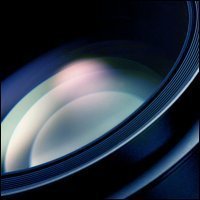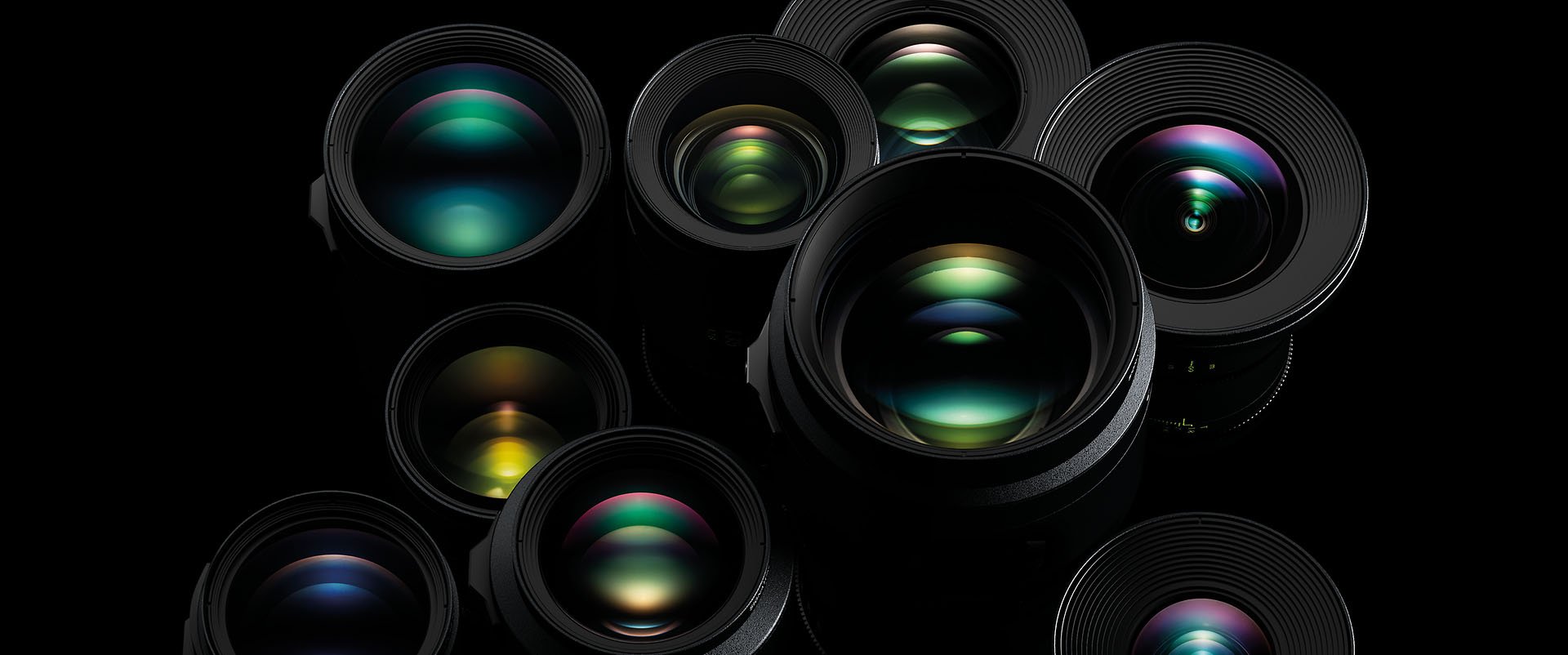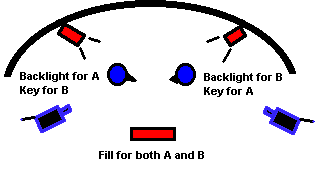-
Posts
1,267 -
Joined
-
Last visited
Everything posted by Tim Tyler
-

Wrapping Light in Meet Joe Black
Tim Tyler replied to Stuart Allman's topic in Lighting for Film & Video
Nice write-up, Stuart. Might I suggest you aim the fresnels into the center of the reflector boards. Oh - I see. You tried that. Good work. -
The Big Picture Strikes Back http://www.nytimes.com/2013/12/01/magazine/the-big-picture-strikes-back.html Good New York Times article today by A. O. Scott
-
Lump of Coal added!
-
Cinematography.com has compiled a list of quality, practical gear that every professional and student cinematographer, camera assistant and gaffer will likely enjoy receiving. And don't forget our extensive Books for Cinematographers section of Cinematography.com! Forward this post to your family and friends! Something missing from this selection? Reply with your suggestion.
-
At the heart of the Nolab Digital Super 8 Cartridge is a tiny but powerful 5 megapixel image sensor similar to the one in your smartphone. Combined with a custom glass objective lens, the sensor focuses on a ground glass image plane pressed against the cameras film gate. By using a 5 megapixel sensor we can capture 720p HD footage at the native Super 8 aspect ratio of 4:3. http://hayesurban.com/current-projects/2012/3/14/digital-super-8.html
-
Welcome to cinematography.com, Arthur. Adrian's china-ball suggestion is a good one. A tech scout of your location with the director, DP and camera operator will be invaluable. Even if the camera sees "everything" it might still be possible to hide some lights. This shot from Irreversible uses flashing party lights that are visible to the camera.
-
John Landis might be burning some bridges with these comments. Hollywood Reporter 11-20-2013 John Landis Rails Against Studios: 'They're Not in the Movie Business Anymore' Are Hollywood studios primarily interested in making a profit? Most likely. Are Avatar and Gravity bad movies? I think most would not agree. I cannot help but wonder if perhaps his comments were taken out of context or perhaps lost in translation to/from Spanish..
-
MAIN COMPETITION Golden Frog: Ida cin. Łukasz Żal, Ryszard Lenczewski dir. Paweł Pawlikowski Silver Frog: Heli cin. Lorenzo Hagerman dir. Amat Escalante Bronze Frog: Inside Llewyn Davis cin. Bruno Delbonnel dir. Ethan Coen, Joel Coen *** *** *** POLISH FILMS COMPETITION Best Polish Film: The Girl from the Wardrobe cin. Arkadiusz Tomiak dir. Bodo Kox *** *** *** STUDENT ETUDES COMPETITION Laszlo Kovacs Student Award - The Golden Tadpole: Such a Landscape cin. Zuzanna Pyda dir. Jagoda Szelc school: Państwowa Wyższa Szkoła Filmowa, Telewizyjna i Teatralna im. L.Schillera w Łodzi (PWSFTviT) The Winner of the Golden Tadpole has also received the Polish Filmmakers Association Award Silver Tadpole: Zinneke cin. Erika Meda dir. Rémi Allier school: Institut des Arts de Diffusion (IAD) Bronze Tadpole: Funeral of Harald Kramer cin. Anselm Hartmann dir. Marc Schlegel school: Institut für Film und Fernsehen FILMAKADEMIE WIEN Polish Film Institute and Mastershot Special Award for Best Cinematography in the Student Etudes Competition: Magnesium cin. Paul Özgür dir. Sam De Jong school: Nederlandse Filmacademie - Netherlands Film Academy *** *** *** FEATURE LENGTH DOCUMENTARY FILMS COMPETITION Golden Frog — Grand Prix: Winter Nomads cin. Camille Cottagnoud dir. Manuel von Stürler Special Mention: Matthew's Laws cin. Aage Hollander, Marc Schmidt dir. Marc Schmidt *** *** *** SHORT DOCUMENTARY FILMS COMPETITION Golden Frog — Grand Prix: Grandpa and Me and a Helicopter to Heaven cin. Johan Palmgren dir. Åsa Blanck, Johan Palmgren Special Mention: Not Anymore: A Story of Revolution cin. Matthew VanDyke dir. Matthew VanDyke *** *** *** DIRECTORS' DEBUTS COMPETITION under the patronage of the Polish Filmmakers Association (SFP) Best Directorial Debut: Augustine cin. Georges Lechaptois dir. Alice Winocour *** *** *** CINEMATOGRAPHERS' DEBUTS COMPETITION under the patronage of the Polish Filmmakers Association (SFP) Best Cinematography Debut: Medeas cin. Chayse Irvin dir. Andrea Pallaoro *** *** *** 3D FILMS COMPETITION Best 3D Documentary Film: Pina cin. Hélene Louvart dir. Wim Wenders Best 3D Feature Film: Gravity cin. Emmanuel Lubezki dir. Alfonso Cuarón *** *** *** MUSIC VIDEOS COMPETITION Best Music Video: Gesaffelstein Pursuit cin. Nicolas Loir dir. Fleur & Manu Best Cinematography In A Music Video: Ghostpoet Cold Win cin. Nicolas Loir dir. Cyrille de Vignemont *** *** *** ADVERTISING SPOTS COMPETITION "EUROPEAN FUNDS IN FOCUS... NEW PERSPECTIVE" In co-operation with Kujawsko-Pomorskie Voivodeship The Jury decided not to present the Main Award. The Special Mention was presented to The Ministry of Regional Development for a series of commercials Każdy korzysta, nie każdy widzi (Everyone benefits, not everyone sees).
-

ANGENIEUX ZOOM 9,5-57MM 1:1,6F question
Tim Tyler replied to Lukasz Jaczun's topic in Lenses & Lens Accessories
Since the BMD Pocket Camera has a S16 sized sensor, this topic might be helpful. Whether or not to use Angenieux zoom for S-16mm http://www.cinematography.com/index.php?showtopic=40731 -
You could research the make and model of projector being used to find out what its color temp options are. You could also project a known white image from that projector onto a white card and then white-balance your camera to see what the color temperature result is. You could also use any digital still camera with raw capability to photograph any projected image on the screen. Ingest the raw photo into software like Lightroom and drag the "color temperature" slider back and forth until the photo looks proper. Note the value of the color temp slider. Once you know the color temperature you could try filtering the projector lens in order to match the projector's output to your preferred color temperature. Filtering the projection will reduce the output intensity.
-

Wrapping Light in Meet Joe Black
Tim Tyler replied to Stuart Allman's topic in Lighting for Film & Video
Shower curtains are not heat resistant and could catch fire or melt. Film production diffusion is manufactured specifically to be safe when used near hot lights. -
Here is the excerpt that addresses a film production intern:
-

Magenta Cast over image when using EDR
Tim Tyler replied to oscar jimenez's topic in Vision Research
Here is a reply I received from Vision Research: EDR is an exclusive Phantom technique to do a double exposure, frame by frame. The idea is to use EDR (enhanced dynamic range) to re-expose the saturated pixels to shorter exposure times to reduce the number of over exposed pixels, effectively increasing your dynamic range. When using EDR however, you must be careful of the "Magenta" that does appear. If you are using EDR with less than 1/3 the original exposure time, you can get this Magenta. To avoid this: Do not use EDR always, only when you expect to get oversaturated pixels (reflections in bright sunlight, explosions, etc... When using EDR, use it at just under 50% of the original exposure time. Example, if your main exposure time is set at one millisecond, use an EDR time of no more than 40% of the original, or in this case, 400 microseconds The Magenta is unavoidable when using very short EDR times, it is not a failure of the camera. you CAN however, use the white balance AGAIN after you notice the Magenta, and should be able to nearly erase it. Suggested Tutorials http://www.visionresearch.com/Service--Support/Tutorials/ -
-
Axel, As you probably already know, opportunities for advancement in the film business often come from relationships. Since you already have relationships in France it would seem logical that you build upon your local reputation and look for more work as a cinematographer within the community in which you are already familiar. Since you have already worked professionally as a grip and electrician, and have shot some short films, I don't think film school is what you need. You might also try looking for work as a freelance television cameraman, shooting news and documentaries, which will allow you to focus on learning different cameras without the high expectations more often found on a film set.
-

Combo Iris Rack / Vari ND Rack
Tim Tyler replied to David William Harris's topic in Camera Operating & Gear
I think you're talking about varying the depth of field during a shot without affecting exposure, right? Although I haven't seen Speed Racer I'm pretty sure 99% of it was shot on a green screen. A shot like the one you describe would be easy to create and highly adjustable in post if the footage had a keyed background. Cinema lenses all have geared T-stop rings so that they can be controlled remotely using silent motors typically mounted to the camera's support rods. Steadicam and jib operators use these everyday. An additional motor and gear ring connected to a variable ND could allow the ND to be remotely controlled manually or with some kind of automation for more precision. And somewhat related, FYI - Some of the better film cameras have adjustable shutters that can be automatically ramped in conjunction with FPS speed changes so that exposure / T-stop does not change during a speed change (i.e. normal speed changing to slow motion). -
-

How is the replacement of film projectors progressing?
Tim Tyler replied to Keith Walters's topic in General Discussion
Looks like Honda is helping to keep drive-in theaters alive by equipping five with digital projectors. http://www.youtube.com/watch?v=zh2ULhXtqYU http://projectdrivein.com/ -

Wrapping Light in Meet Joe Black
Tim Tyler replied to Stuart Allman's topic in Lighting for Film & Video
An 8' grid cloth rents for about $20/day. -

Wrapping Light in Meet Joe Black
Tim Tyler replied to Stuart Allman's topic in Lighting for Film & Video
You might be able to make two 750's work in a book light using lite or quarter grid cloth for diffusion. -
Perhaps this will help describe how displays render images. http://www.youtube.com/watch?v=4d4rdat3HdA#t=1m11s
-
In THR's first Cinematographer Roundtable, Barry Ackroyd ("Captain Phillips"), Sean Bobbitt ("12 Years a Slave"), Bruno Delbonnel ("Inside Llewyn Davis"), Stuart Dryburgh ("The Secret Life of Walter Mitty") and Phedon Papamichael ("Nebraska") reveal the biggest surprises about being a DP, the directors who have inspired them and why the movies they shoot aren't always the movies we see. http://www.hollywoodreporter.com/news/roundtable-5-top-cinematographers-why-656281
- 1 reply
-
- 1
-

-

Wrapping Light in Meet Joe Black
Tim Tyler replied to Stuart Allman's topic in Lighting for Film & Video
A book light can work well in a tight space. Basically a triangle configuration with your source aimed into a bounce card which directs through the diffusion. (image courtesy hurlbutvisuals.com)





